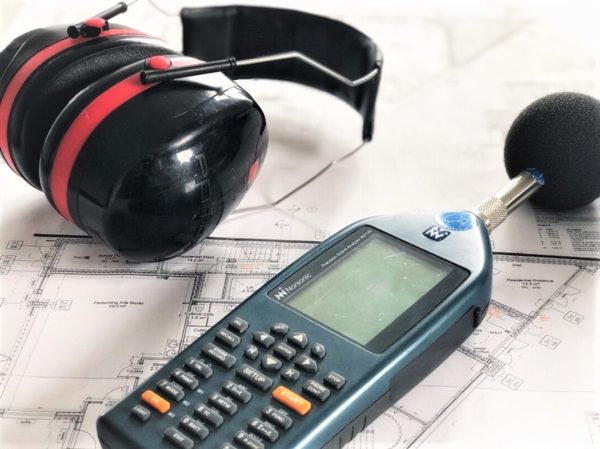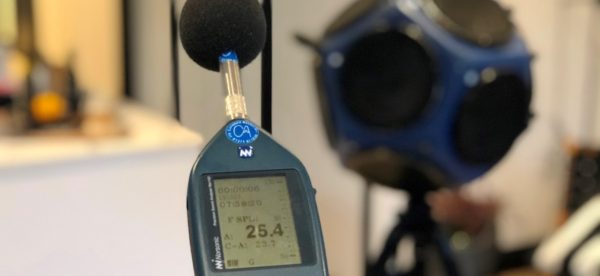Designing Party Walls to pass Sound Insulation Testing
This article focuses on the basics of good acoustic design for improving the soundproofing in party walls in dwellings, to pass the Precompletion Sound Testing for Building Regulations Part E
The importance of adequate sound proofing in Party Walls.
Undertaking adequate soundproofing to party walls to ensure your development meets the requirements of Part E of the Building Regulations and passes the precompletion sound testing, is an essential part of modern construction. Achieving good soundproofing on house party-walls and flat separating floors is essential to ensure that future residents are not adversely affected by excess noise from neighbouring residents.
Unfortunately, poor sound insulation is an issue that affects many attached houses and flats and has been made worse in recent years due to high powered television sets with sound bars, speakers, gaming stations and modern music production equipment.
Excess noise through shared walls can be debilitating for all residents and nobody wants to pay for a new property (or rental unit) only to hear their neighbour’s speech, television or music through poorly soundproofed walls.
When undertaking a new build development or conversion project, it is important to be aware of the sound insulation requirements of Part E of the Building Regulations for party walls, and achieve the required sound insulation levels are required to show compliance with the regulations.
To comply with Part E of the Building Regulations, soundproofing measures should not be designed merely to ‘pass a party wall sound test’, because if a development just passes, then this means that the properties separating party-wall is only acceptable, but not great soundproofing. This can be a huge problem if you a renting out your property, as your new resident may be noise sensitive and because of the excess noise, may only rent for a short period. Also, with the advent of social media you may also receive negative reviews of the property, which may affect future rentals of the property.
We can help with your party wall design.
APT Sound Testing works with hundreds of builders, architects and property developers helping them with the acoustic design of their developments. Consequently, we are well placed to understand the challenges that sound proofing party-walls poses to new build and/or conversion projects. Therefore, we thought we would produce an acoustic design article to assist those responsible for designing or constructing party-walls or separating floors.
Reason for party wall sound test failure
There are hundreds of reasons why party walls fail to meet the standards of approved document E. One of the most common reasons we see for sound test failure, is due to insufficient mass within the construction of the party wall. One way to improve the mass of a party wall is to construct the walls out of masonry i.e., brick and/or blockwork. If you construct the walls out of timber or metal, it is always best to build a twin wall with cavity, with two layers of 15mm SoundBloc to each side of the wall and high mass RW60 acoustic insulation (minimum pass of 60kg/m3) within the wall frames.
The second method of improving the party walls to pass Approved Document E, is by introducing decoupling to the wall construction. This can be done by decoupling the wall structure from the plasterboard linings by the introduction of a resilient bar system to the wall frames.
On plasterboard walls we recommend staggered or double stud walls wherever possible – you could also use resilient bars in the wall construction. Staggered walls, double stud walls and walls formed with resilient bars are three construction methods which minimise the spread of sound waves, dampen vibrations, and reduce noise levels through the party walls. Also ensure that sockets are not placed back-to-back in party walls but are staggered by a minimum of 450mm and acoustic pads are also installed wherever possible. Our acoustic design reviews have lots of useful information on how to prepare your project to pass the precompletion sound testing.
Watch out for Flanking transmission through Party Walls.
Flanking sound transmission occurs when sound is transmitted from one space to another indirectly, through adjoining parts of the structure. For example, impact sound may be transmitted from one room to another through a timber floor, but also through the supporting wall. This can be as simple as the wall has been built straight off the top of the timber floor finish, so the noise travellers along the timber floor and under the party wall from unit to unit.
Flanking noise transmission is always a potential problem within any structure buildings being converted and depending on the intensity of the acoustic energy received via flanking transmission paths, the effectiveness of sound insulation of separating partitions can be much lower than expected from their construction. We often carried out precompletion sound testing to wall partitions that should have achieved around 50dB, but only achieved 40dB, resulting in sound insulation test failure.
Therefore, careful consideration must be given to the effect of flanking noise transmission within all party walls within new and conversion projects, and all potential flanking paths must be identified and eliminated prior to the installation of any sound insulation system.
Another common issue that often get overlooked is the filling of air leakage paths. If air can escape through gaps, sound will follow the same path. Therefore, providing an air-tight seal should be given high priority, so sealing all air gaps is important and should be carried out whenever possible.
We can help with the acoustic design and sound testing to your party walls.
APT Sound Testing can provide telephone advice, quote to undertake an acoustic design review of your architect’s drawings to help the likelihood of passing the sound insulation test at the first attempt, reducing the risk of costly remedial works to your project prior to handover. If you require sound insulation testing to party walls, or you need an acoustic design review on your development, please contact us now or visit our acoustic design page.
For further advice on Sound Insulation Testing across the London and the UK, contact APT Sound Testing. Call our expert acoustic consultants today on 01525 303905 or email us at info@aptsoundtesting.co.uk for friendly advice about building party walls and floors and/or sound insulation testing on your construction project.




